
The sound of young children chanting ‘Refugees welcome here!’ rang out in Leeds this summer as they waved placards and banners proclaiming their support for refugees. The protest was organised by children at Manor Wood Foundation Stage Unit after they explored the concept of ‘rights’ and chose to invoke their right to protest and call for more rights for those who are forced to leave their home country.
Staff decided to focus on the wide subject of ‘rights’ after noting that a group of children seemed particularly interested in nurturing teddies at the nursery – tucking them into beds, reading them stories and ensuring their needs were met.
‘The format of our project work is that we meet weekly with the children. During the meetings they are supported in sharing their ideas, theories and thoughts with one another,’ explains atelierista Victoria Lungu. ‘As the adults in the project, we are responsible for supporting them through their project journey; asking them questions, offering them input as required and helping the children to work collaboratively.’ She believes the project meetings should be ‘active and exciting’ and child-led.
The way staff work with the children is encapsulated in an expression by Loris Malaguzzi, founder of the Reggio Emilia approach: ‘We must be able to catch the ball that the children throw us, and toss it back to them in ways that make the children want to continue the game with us, developing, perhaps, other games as we go along.’
HUMAN RIGHTS
Staff introduced the children to the concept of human rights. They talked about the United Nations Convention on the Rights of the Child and the fact that all children around the world are entitled to the same civil, political, economic, social and cultural rights. These discussions were supported by watching short videos. Children drew and discussed the rights that resonated with them before their interests moved to the world and they started to study globes, maps and flags.
‘With links to other countries, the children proudly found their flags and shared their own family stories with their friends,’ says Victoria. ‘The children then started to look at maps and we brought them a large floor map to study. They were fascinated mapping out the routes between different countries and making links between places they knew and places they didn’t. They started to draw their own maps, some treasure, some of their own imaginary worlds.’
Staff linked the children’s interests of rights and maps together by introducing them to the giant puppet Little Amal which has travelled across more than 8,000km from Syria in support of young refugees. They were captivated by a video of the puppet asking questions, including ‘Where did she come from?’, ‘Where is she going?’ and ‘Why?’ Staff ordered a selection of books around refugees (see Book corner) for the children to explore and provoke more conversations. Discussions coincided with the outbreak of war in Ukraine, which many of the children were aware of, so staff carefully discussed war and injustice with the children.
‘What struck us the most about the children’s reactions to learning more about refugees was their instantaneous empathy, compassion and openness. Their instinct was to give, offer what they had to share and welcome,’ says Victoria.
‘WE LOVE REFUGEES’
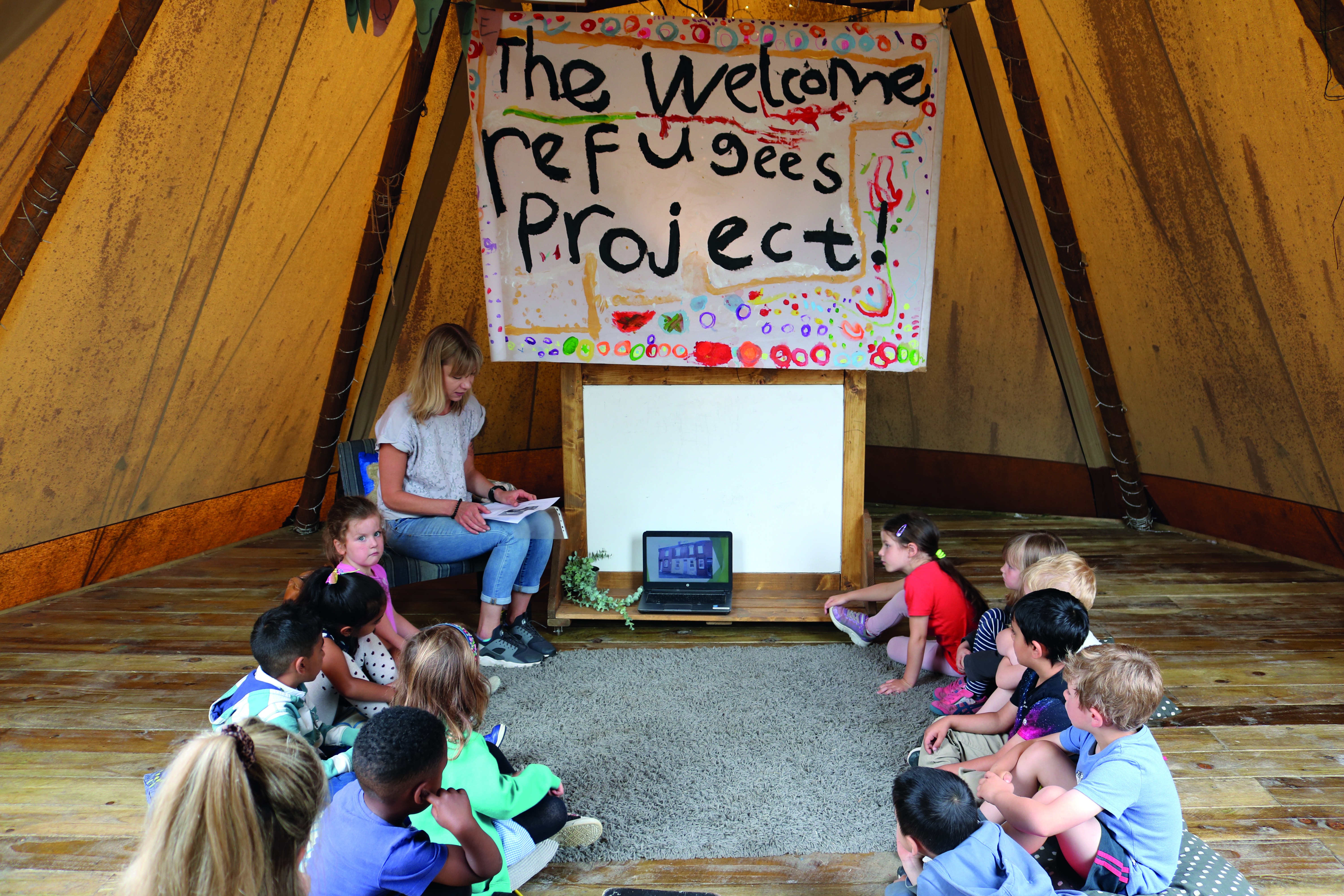 Children realised that many of their peers may not know the term ‘refugee’ and wondered how they could share their knowledge. ‘Talk moved to dissemination of information. How could we pass on a message?’ says Victoria. ‘The children came up with all sorts of ideas – emailing, texting, talking. But how could that message be spread more widely?’ The children made the connection to the rights they had discussed and that they are allowed to express an opinion.
Children realised that many of their peers may not know the term ‘refugee’ and wondered how they could share their knowledge. ‘Talk moved to dissemination of information. How could we pass on a message?’ says Victoria. ‘The children came up with all sorts of ideas – emailing, texting, talking. But how could that message be spread more widely?’ The children made the connection to the rights they had discussed and that they are allowed to express an opinion.
Children had noticed images of placards in a couple of books declaring ‘Refugee rights!’ and ‘Refugees welcome!’, and staff talked to them about protests. They showed them climate-change protests and a protest by school children in Scotland who were outraged that their play time had been reduced.
‘The children became fully invested in the idea of a protest, particularly as the process of making placards and banners started,’ says Victoria. ‘There was a really pivotal moment involving Danyal who had painted a beautiful rainbow sign with no text. He was very pleased with his placard and walked around the unit holding it high and proud. Etta was fascinated and asked what he was doing and what the sign meant. This challenged Danyal and he decided to add words. He promptly returned to the atelier to write “We love refugees” in beautiful neat text.’
Staff got in touch with local charity Positive Action for Refugees and Asylum Seekers so the children could have a more tangible link between their explorations and the charity sector. The charity’s director Karen Pearse visited to speak to children about their work. ‘The children were captivated by Karen’s story and felt more determined than ever to shout their message loud and clear,’ says Victoria.
The following week, children visited the People’s History Museum in Manchester to further explore the concept of democracy and protests. ‘The exhibitions of banners and placards from many protests throughout history really chimed with the children,’ says Victoria. ‘We felt they could see the value of their work reflected back to them, as there was a whole exhibition dedicated to banners like theirs.’
TAKE TO THE STREETS
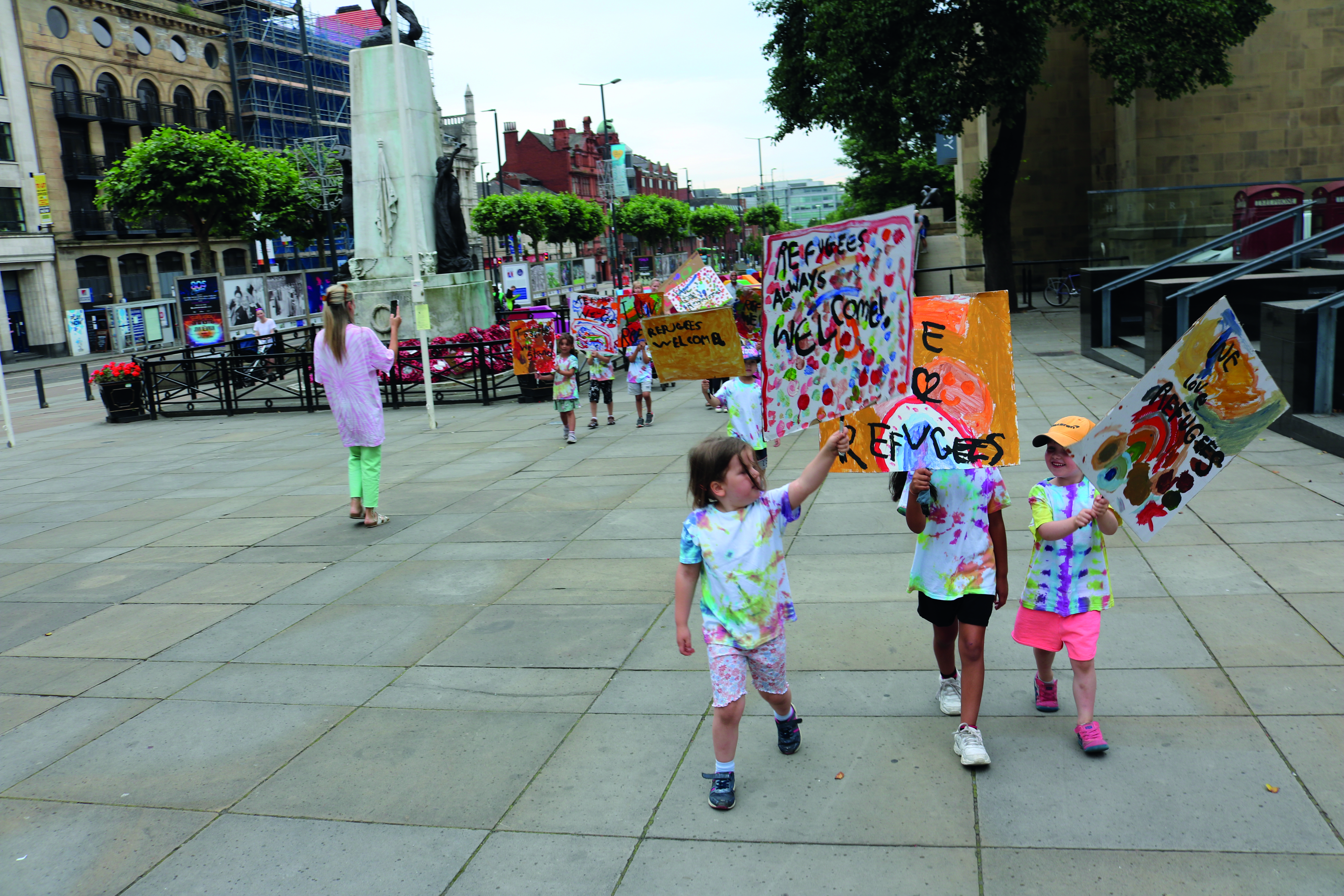 On the day of the protest, children gathered in central Leeds with their families. ‘They raised their voices, held their placards up high and blew us all away with their confidence and bravery,’ says Victoria. ‘As we walked around the corner, passersby stopped and watched. Some took photos, clapped and cheered. The children shouted a little louder, encouraged by the interest they were generating, and we set off on another loop.’
On the day of the protest, children gathered in central Leeds with their families. ‘They raised their voices, held their placards up high and blew us all away with their confidence and bravery,’ says Victoria. ‘As we walked around the corner, passersby stopped and watched. Some took photos, clapped and cheered. The children shouted a little louder, encouraged by the interest they were generating, and we set off on another loop.’
Amazingly in the crowd were two women who introduced themselves and said they were refugees. ‘It was such a moving moment and we were delighted when they decided to stay and share their thoughts and thanks with our project team and families,’ says Victoria.
The children’s protest gained further support when it was shared on Twitter, making staff and children feel they had succeeded in their mission. ‘They used their power as individuals, and as a collective, to make noise, challenge, shout and be heard,’ says Victoria. ‘The message of compassion and hope that these children shared was something quite extraordinary.’
BOOK CORNER
 Refugees and Homelands by Louise Spilsbury
Refugees and Homelands by Louise Spilsbury
This book explains civil rights and the reasons why refugees flee their homelands in an accessible way for younger readers.
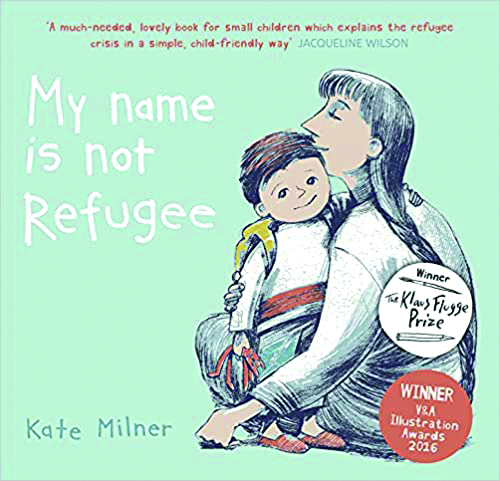 My name is not Refugee by Kate Milner
My name is not Refugee by Kate Milner
A young boy discusses the journey he is about to make with his mother. An emotional exploration that draws the young reader into the journey.
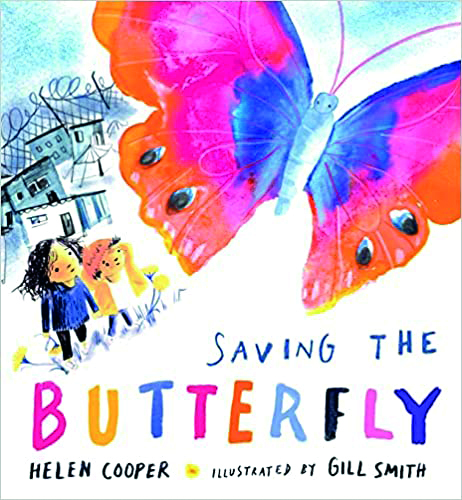 Saving the Butterfly: A story about refugees by Helen Cooper and Gill Smith
Saving the Butterfly: A story about refugees by Helen Cooper and Gill Smith
A poetic, powerful story about a little brother and a big sister finding a new home and new hope after being rescued from a boat lost in the dark sea.
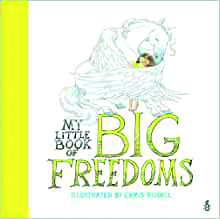 My Little Book of Big Freedoms: The Human Rights Act in Pictures by Chris Riddell
My Little Book of Big Freedoms: The Human Rights Act in Pictures by Chris Riddell
This book features 16 different freedoms, each accompanied by beautiful illustrations.
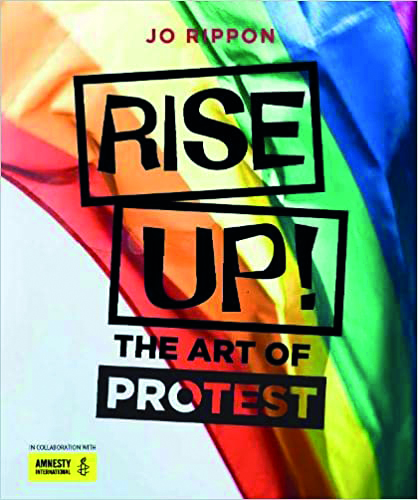 Rise Up! The Art of Protest by Jo Rippon and Chris Riddell
Rise Up! The Art of Protest by Jo Rippon and Chris Riddell
Human rights belong to every single one of us but they are often under threat…
 Lily and the Polar Bears by Jion Sheibani
Lily and the Polar Bears by Jion Sheibani
Themes of immigration and climate change are explored in this tale of Lily spotting polar bears floating towards the beach.
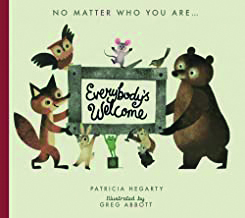 Everybody’s Welcome by Patricia Hegarty and Greg Abbott
Everybody’s Welcome by Patricia Hegarty and Greg Abbott
A little mouse and a medley of animals create a homewhere everybody is welcome, no matter who they are.









